16 phlomis varieties to add height and depth to your borders
Our favorite phlomis varieties will light up your garden with their tall stems and pretty rings of flowers

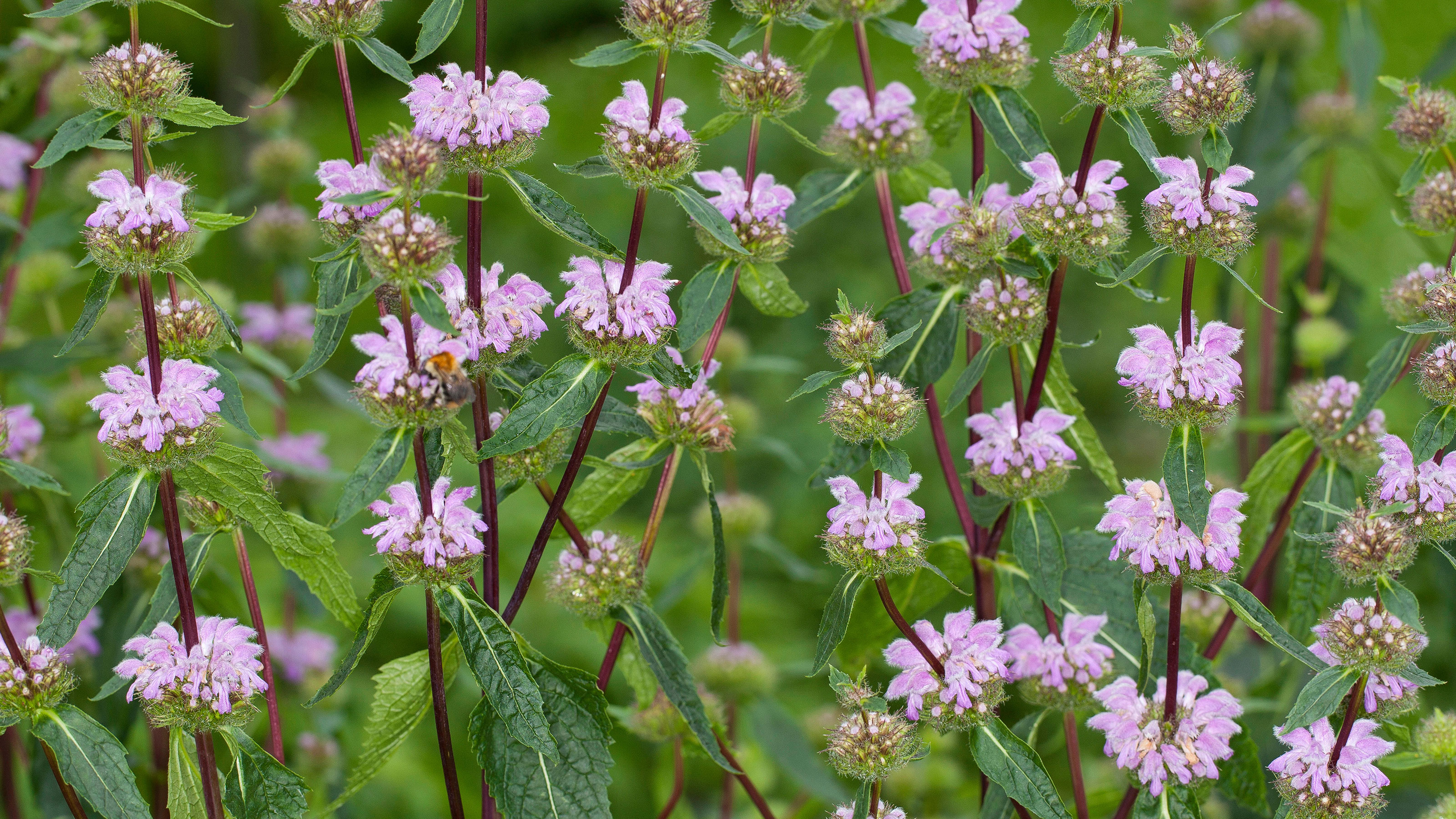
Phlomis varieties are many and varied, and as well as being drought-tolerant and low-maintenance, they provide architectural impact for months and nectar for bees. If you have this eye-catching plant (also known as Jerusalem sage or lampwick), you are guaranteed that visitor after visitor will ask what it is.
These imposing perennials and shrubs, which produce rings of flowers on rigid, tall stems, are so rarely grown that most people are unfamiliar with them. Thankfully, that is changing.
Due to the growing trend for drought tolerant plants, which has led to an increase in demand for gravel gardens, these stalwarts – which hail from the stony maquis of the Mediterranean – are becoming more widely available.
'Phlomis is Greek for flame and, in the ancient world, the plant was used to create lamp wicks,' explains Beth Smith, who holds the National Collection of Phlomis in teh UK. 'Hence one of its common names: lampwick. The other common name, Jerusalem sage, is a misnomer because it isn’t found near the city, but it may be so named because the flowers resemble a style of Jewish headwear.'

Add height to your planting with our favorite phlomis varieties
If your garden conditions suit them, phlomis varieties are well worth growing. Not only are they resilient, low-maintenance plants, they are one of the best ground cover plants and prevent weeds by being allelopathic (meaning they release chemicals).
They are also an interesting way to add height to your flowerbeds. Like a clump of mini Eiffel Towers, they bloom in dense whorls of yellow, pink, or white, widely spaced on upright stems. Bumblebees visit the flowers during summer, and then the plant adds interest over winter with attractive seedheads.
1. Phlomis tuberosa ‘Amazone’ AGM
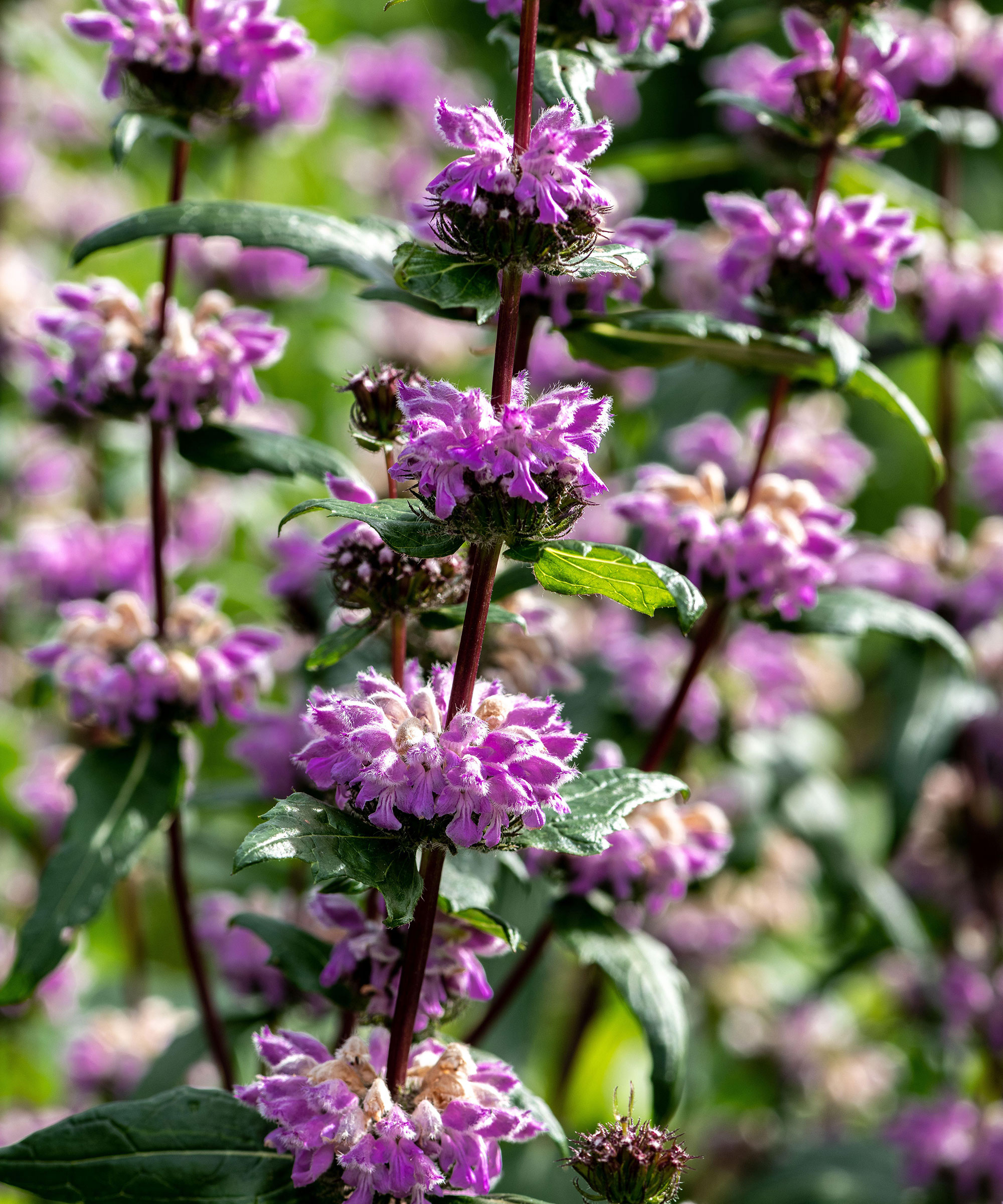
- Hardiness: USDA 6-9 (UK H5)
- Height: 5ft (1.5m)
- Spread: 30in (80cm)
This sage-leaf mullein is vigorous, forming a tall, architectural mass of lavender-pink flowerheads on upright claret stems, above green leaves, during mid to late summer and even into early fall.
They are happiest growing in very well-drained soil in full sun, and the attractive seedheads endure in winter, so it's worth leaving them in place as part of your winter landscaping ideas.
2. Phlomis grandiflora
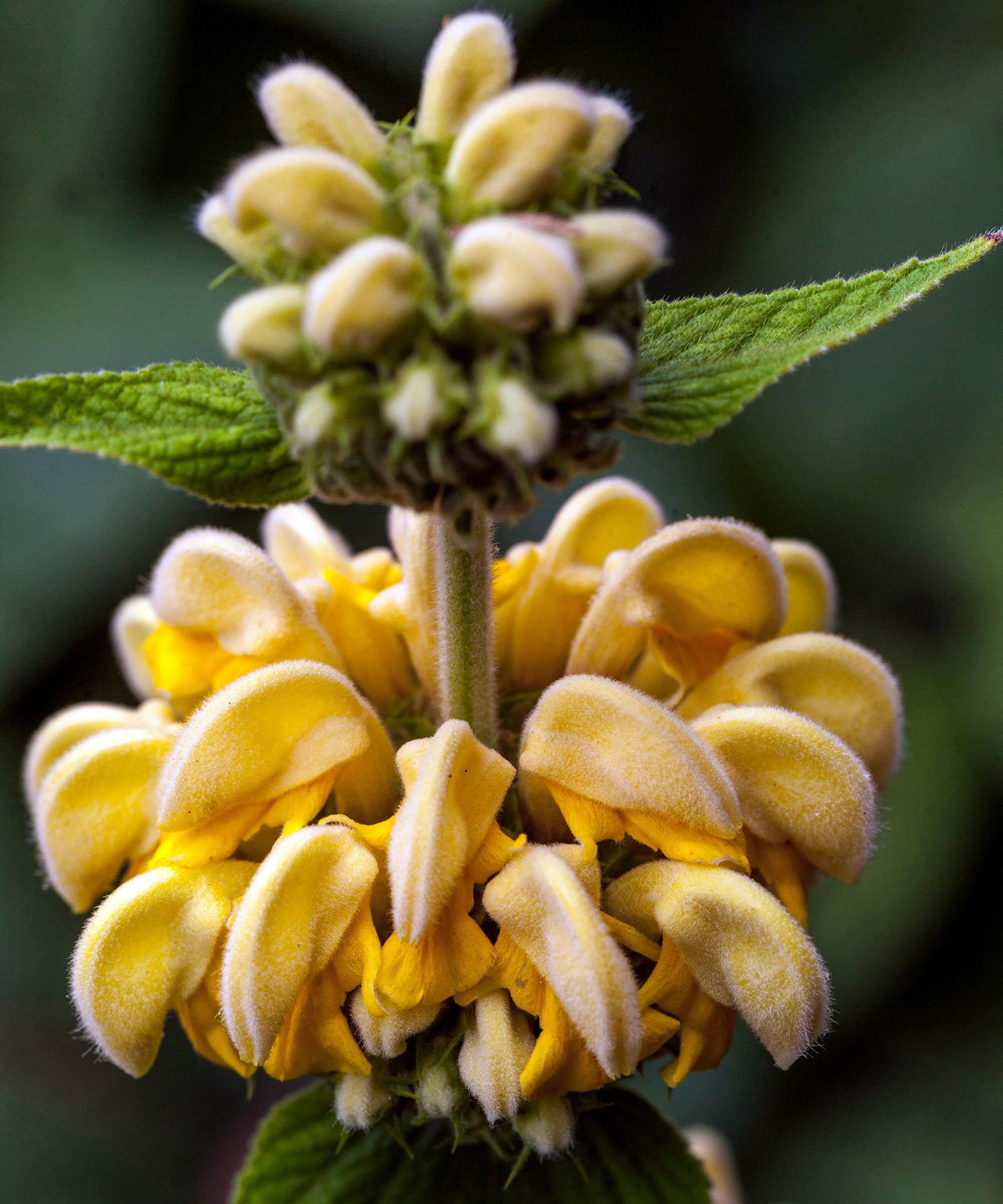
- Hardiness: USDA 6-9 (UK H5)
- Height: 7ft (2m)
- Spread: 5ft (1.5m)
This imposing phlomis from Turkey is the largest of the widely available species, and in warm areas can reach 10ft (3m).
During summer, it sends up stalks dotted with whorls of yellow flowers, above hairy green leaves. The variety ‘Lloyd’s Silver’ has light-grey foliage.
Enjoy the large-flowered Jerusalem sage in well-drained soil in sun, and for a striking effect try planting it alongside Stipa gigantea.
3. Phlomis purpurea

- Hardiness: USDA 6-9 (UK H5)
- Height: 4-5ft (1.2-1.5m)
- Spread: 3ft (90cm)
Matagallo is a delightful shrubby evergreen phlomis from Spain that produces clumps of woolly lilac-pink flowers that resemble the crest of a rooster, on upright silver stems, during summer. The long, felty grey-green leaves are reminiscent of the herb sage.
In the wild, it grows in stony ground, so plant in very well-drained soil. A good planting partner is Echinops bannaticus ‘Taplow Blue’.
4. Phlomis chrysophylla AGM

- Hardiness: USDA 6-9 (UK H5)
- Height: 3ft (90cm)
- Spread: 5ft (1.5m)
This is one of the main species grown in the Dry Garden at RHS Hyde Hall. 'It has grey-green hairy leaves and forms a rounded wood-based shrub, with classic bright-yellow hooded summer flowers in whorls around the stem,' says Ian Bull, Garden Manager at Hyde Hall.
The golden-leaved Jerusalem sage enjoys very well-drained soil in sun, so bear this in mind when choosing a spot for it in your flower bed ideas. A good planting partner is Cistus x argenteus ‘Silver Pink’.
5. Phlomis bovei subsp. maroccana
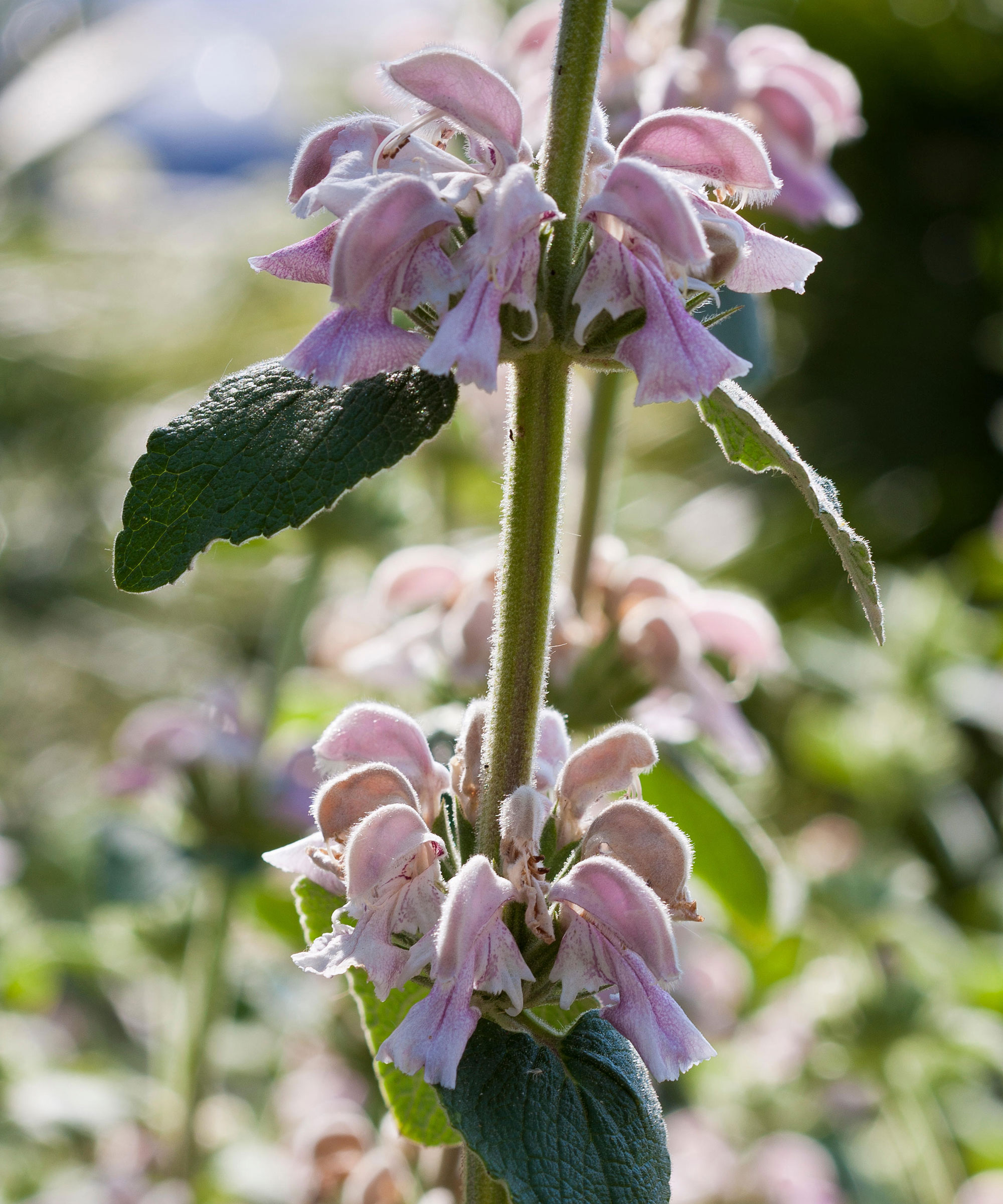
- Hardiness: USDA 6-9 (UK H5)
- Height: 3ft (90cm)
- Spread: 3ft (90cm)
From the wilds of Morocco and Algeria, this upright form has lovely shell-pink flowers tipped with lilac, on erect, felty stems, with very attractive grey-green heart-shaped leaves.
Plant this drought-resistant phlomis in very well-drained soil in full sun. In warm climates, it is said to be capable of growing to 5ft (1.5m).
6. Phlomis purpurea ‘Alba’
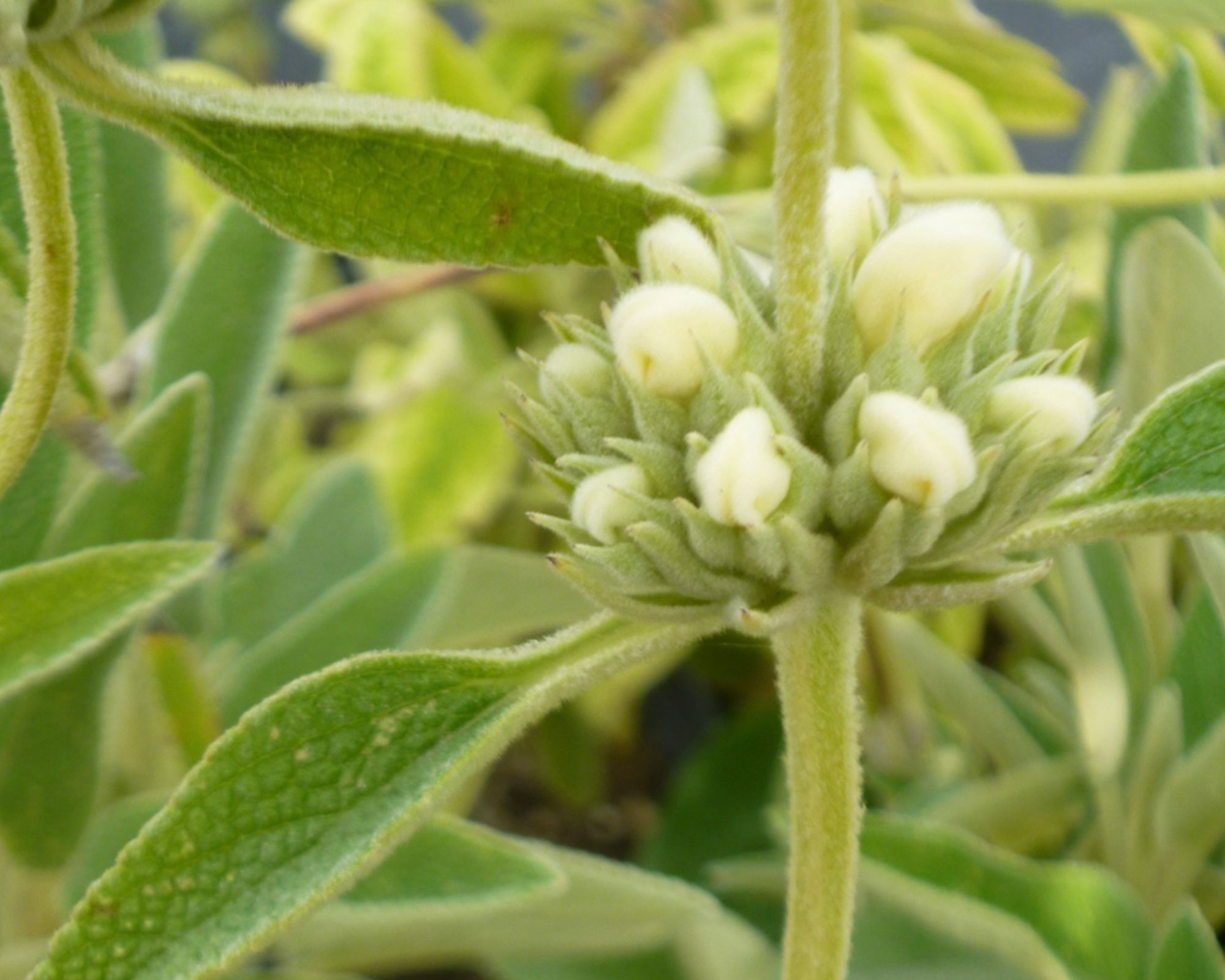
- Hardiness: USDA 6-9 (UK H5)
- Height: 4ft (1.2m)
- Spread: 4ft (1.2m)
A superb white shrubby form with evergreen leaves. The pure white flowers pair beautifully with the grey-green foliage in early summer.
Both this and the mauve-pink species are recommended by Beth Smith for large gardens because they spread after a few years.
Grow this phlomis variety in very well-drained soil in full sun, and partner it with Nepeta ‘Six Hills Giant’.
7. Phlomis lanata
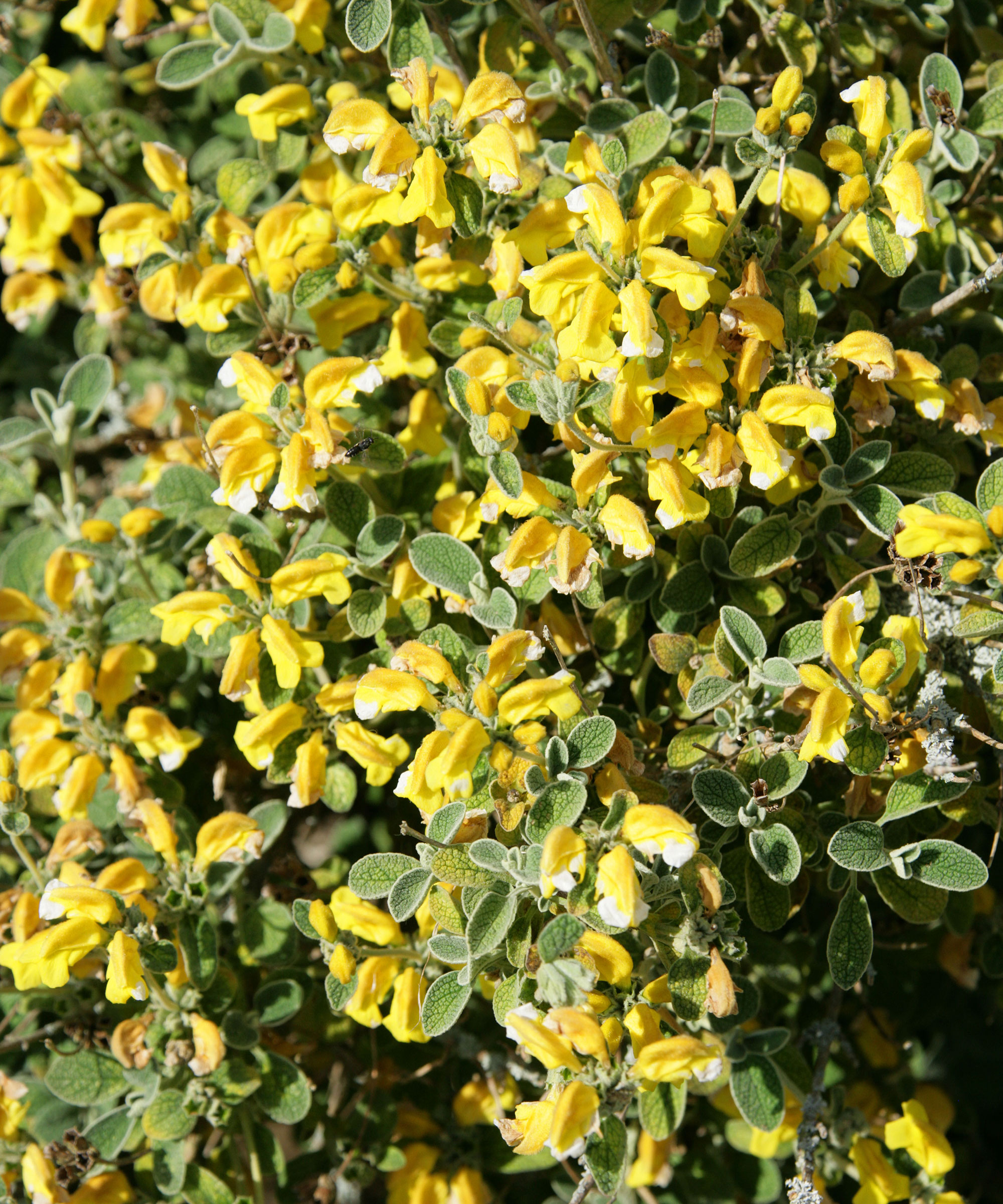
- Hardiness: USDA 7-11 (UK H4)
- Height: 2ft (60cm)
- Spread: 3ft (90cm)
A great plant for the edge of a gravel garden, this compact evergreen has grey-green leaves with furry undersides and golden-yellow flowers in summer.
Recommended by Beth Smith as one of the best plants for small gardens: ‘It’s a neat plant with very small leaves,’ she says.
Plant the woolly Jerusalem sage in well-drained soil in full sun and grow Salvia nemorosa ‘Caradonna’ AGM alongside it.
8. Phlomis cretica

- Hardiness: USDA 6-9 (UK H5)
- Height: 18in (45cm)
- Spread: 18in (45cm)
At home in the rocky gorges of Crete, this small phlomis variety is tough, as long as it has good drainage. Coarse grey-green leaves, paired with whorls of blazing-yellow flowers in early summer. Resembles a shrunken version of P. fruticosa.
Happy in very well-drained neutral to alkaline soil types in sun, and it will grow well alongside Origanum laevigatum ‘Herrenhausen’ AGM.
9. Phlomis lychnitis
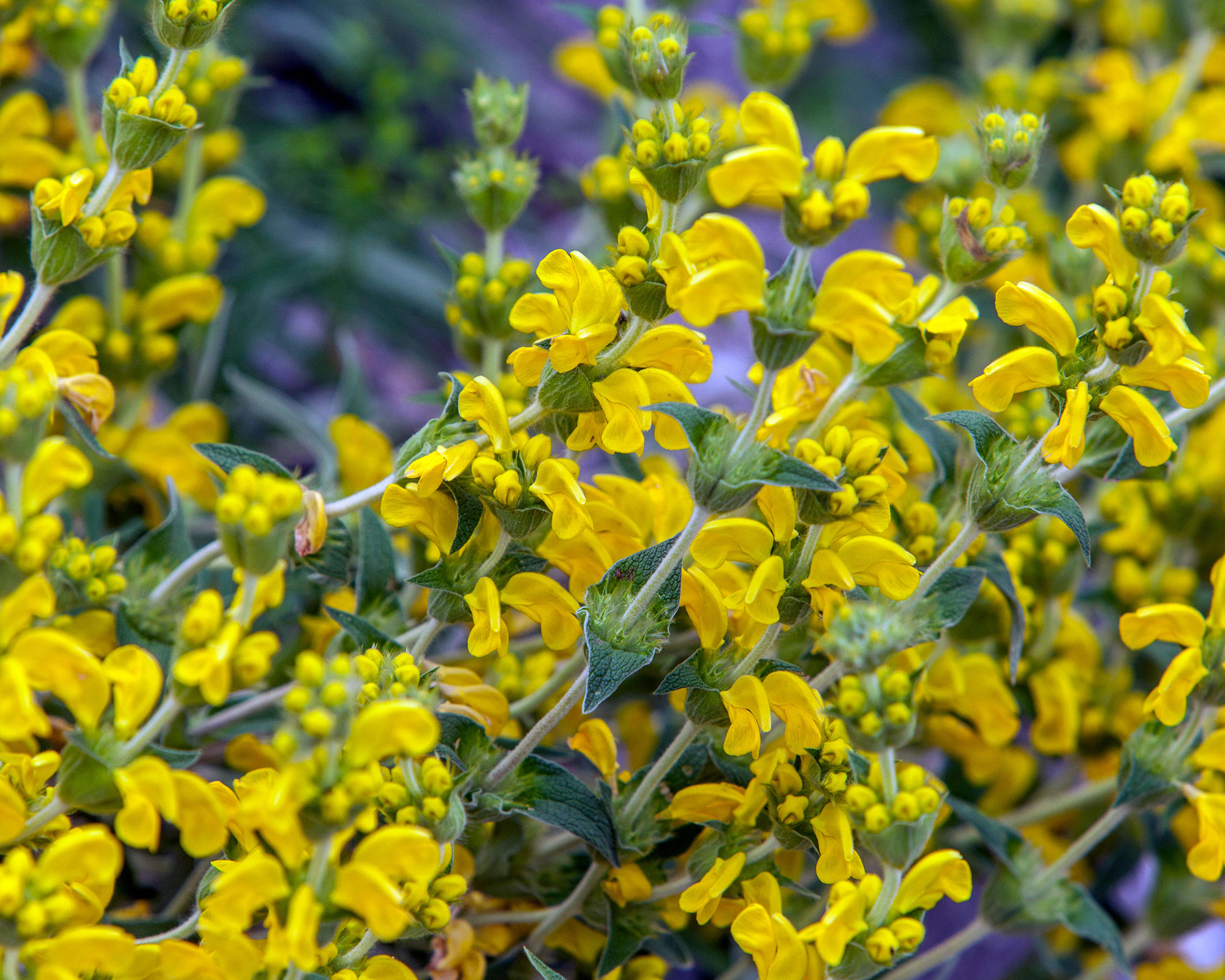
- Hardiness: USDA 7-10 (UK H4)
- Height: 1ft (30cm)
- Spread: 1.6ft (50cm)
The lampwick plant thrives in sun-baked Mediterranean gardens of the South of France, making it ideal for a gravel garden.
It has unusual, attractive, long silver evergreen leaves and canary-yellow flowers in summer, and it forms a spreading compact shrub.
Plant in very well-drained neutral to alkaline soil in full sun and team it with Stipa tenuissima AGM
10. Phlomis russeliana
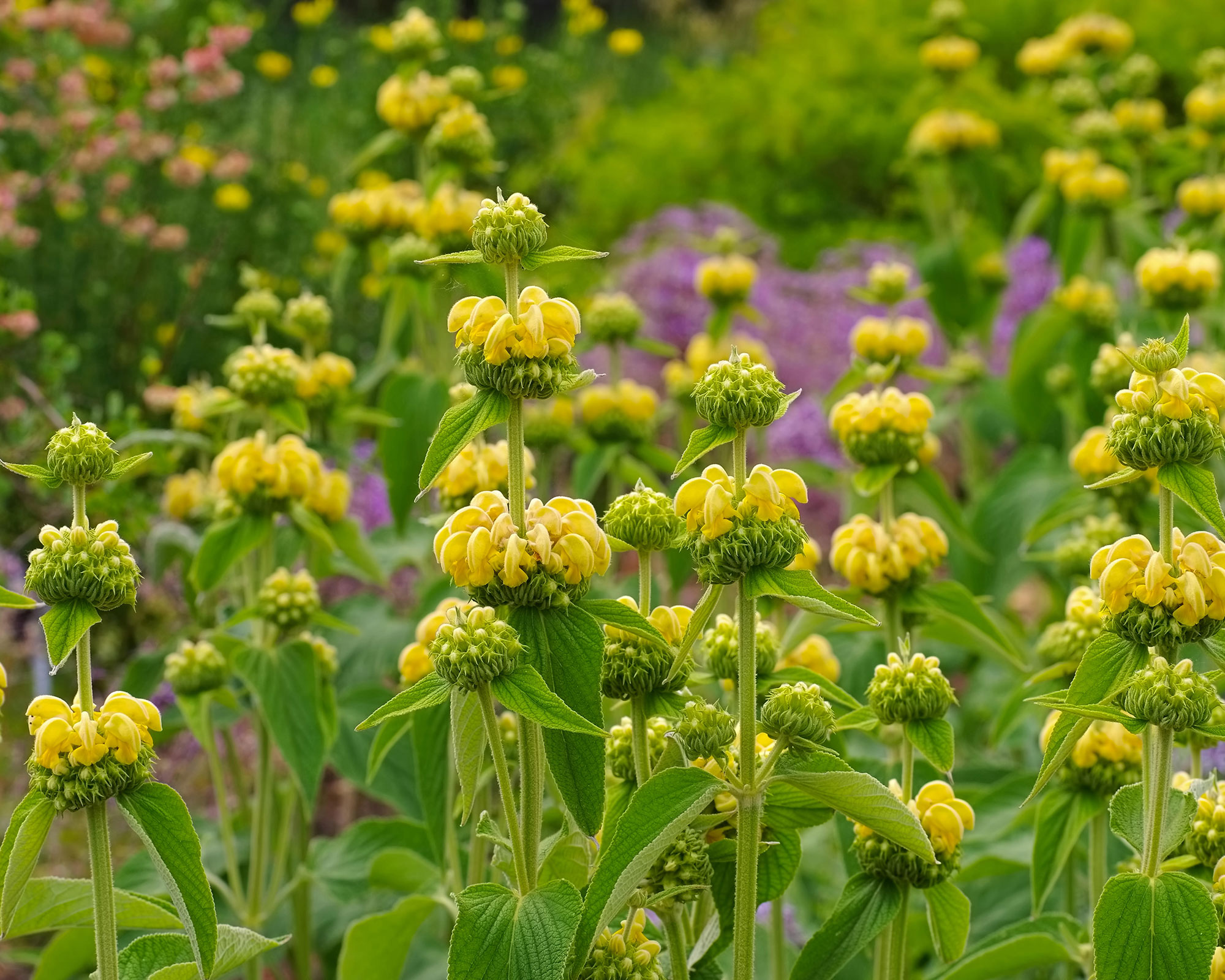
- Hardiness: USDA 5-9 (UK H6)
- Height: 3ft (90cm)
- Spread: 4ft (1.2cm)
Turkish sage is one of the phlomis varieties that gardeners are most familiar with. It has upright stems dotted with whorls of talon-like sandy-yellow summer flowers and coarse green leaves. The seedheads are equally as handsome, providing architectural impact in your winter garden ideas.
Beth Smith suggests it for big garden borders as it spreads in well-drained soil in sun.
11. Phlomis fruticosa AGM
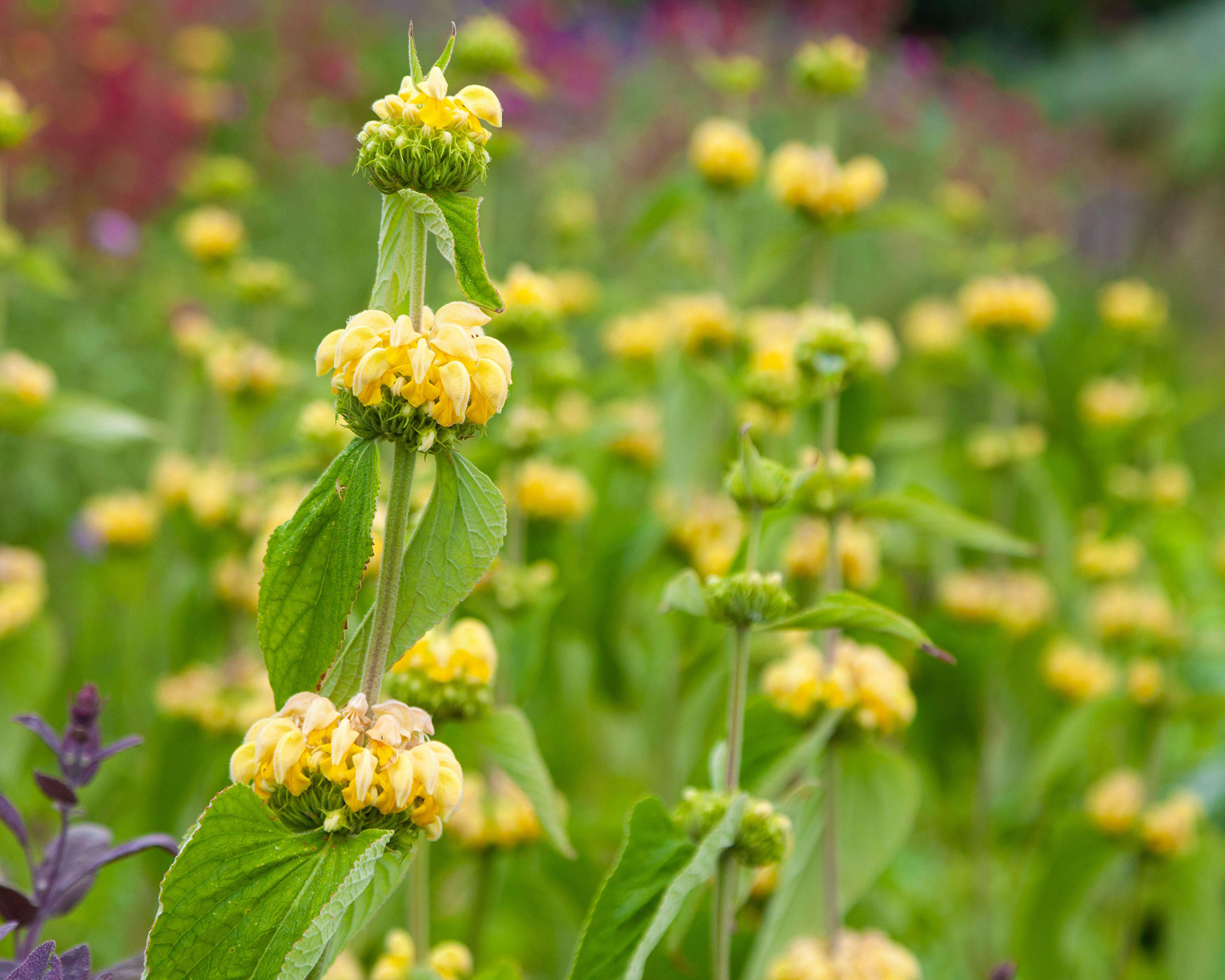
- Hardiness: USDA 8-10 (UK H5)
- Height: 3ft (90cm)
- Spread: 5ft (1.5m)
One of the main phlomis varieties grown in the Dry Garden at RHS Hyde Hall, the Jerusalem sage (or yellow clary) has crowns of butter-yellow flowers on silver stems in early summer, and downy grey-green evergreen leaves. The seedheads are particularly attractive over winter.
Enjoy this shrubby Mediterranean gem in very well-drained soil in full sun, and plat with Crocosmia ‘Limpopo’.
A top tip is to make sure you wear a mask, gardening gloves, and long sleeves to prune hairy types of phlomis, such as P. fruticosa. Do this ideally during or just after rain, as the hairs can cause skin or chest irritation.
12. Phlomis longifolia var. bailanica AGM

- Hardiness: USDA 8-10 (UK H4)
- Height: 4ft (1.2m)
- Spread: 5ft (1.5m)
Recommended by Beth Smith for its lovely veined leaves, the long-leaved Jerusalem sage is an evergreen shrub from Asia that forms a spreading mound. During summer, it is topped with rings of rich-yellow hooded flowers.
Grow in very well-drained soil in sun, in a sheltered spot if you’re in a cold area. A good planting partner is Lavandula x intermedia ‘Sussex’ AGM.
13. Phlomis tuberosa

- Hardiness: USDA 6-9 (UK H5)
- Height: 4ft (1.2m)
- Spread: 2ft (60cm)
If you're searching for phlomis varieties with pink flowers, this lovely option is good one to consider. Recommended by Beth Smith, this wonderful perennial has whorls of hairy lavender-pink flowers on upright port-wine stems, above serrated arrow-shaped leaves, in summer and early fall. The seedheads provide interest during the cold months
Enjoy the sophisticated sage-leaf mullein in very well-drained soil in sun, adn plant alongside Salvia ‘Blue Spire’ AGM.
14. Phlomis cashmeriana
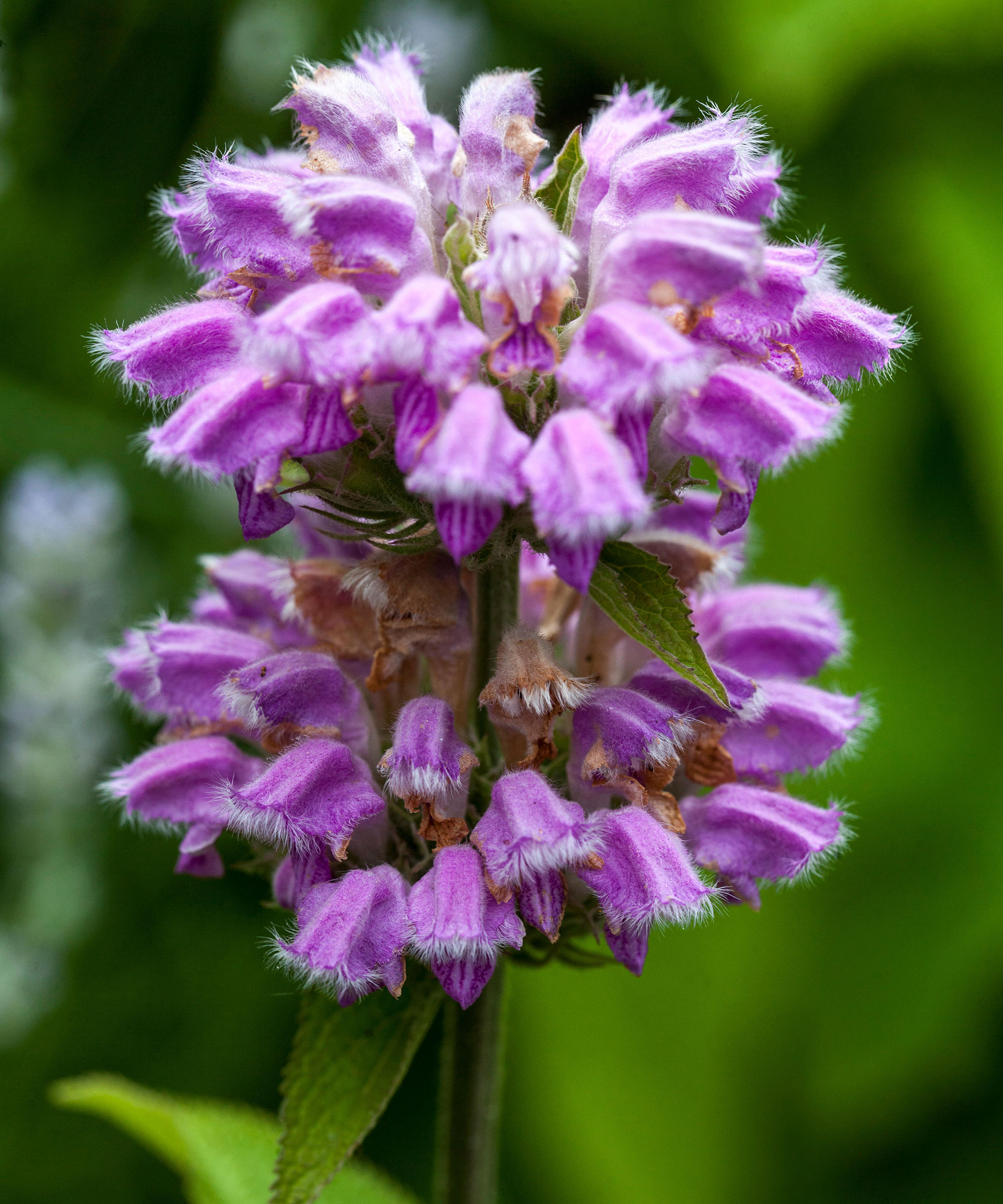
- Hardiness: USDA 5-9 (UK H5)
- Height: 3ft (90cm)
- Spread: 2ft (60cm)
A beautiful herbaceous phlomis from the Himalayas, this produces purple-pink nests of summer flowers on woolly, upright stems with attractive, long leaves that are green on top and silver underneath. The architectural seedheads endure during fall and winter.
Plant the Kashmir sage in very well-drained, sun-baked soil, and try Scabiosa atropurpurea ‘Chile Black’ as a good planting partner.
15. Phlomis italica
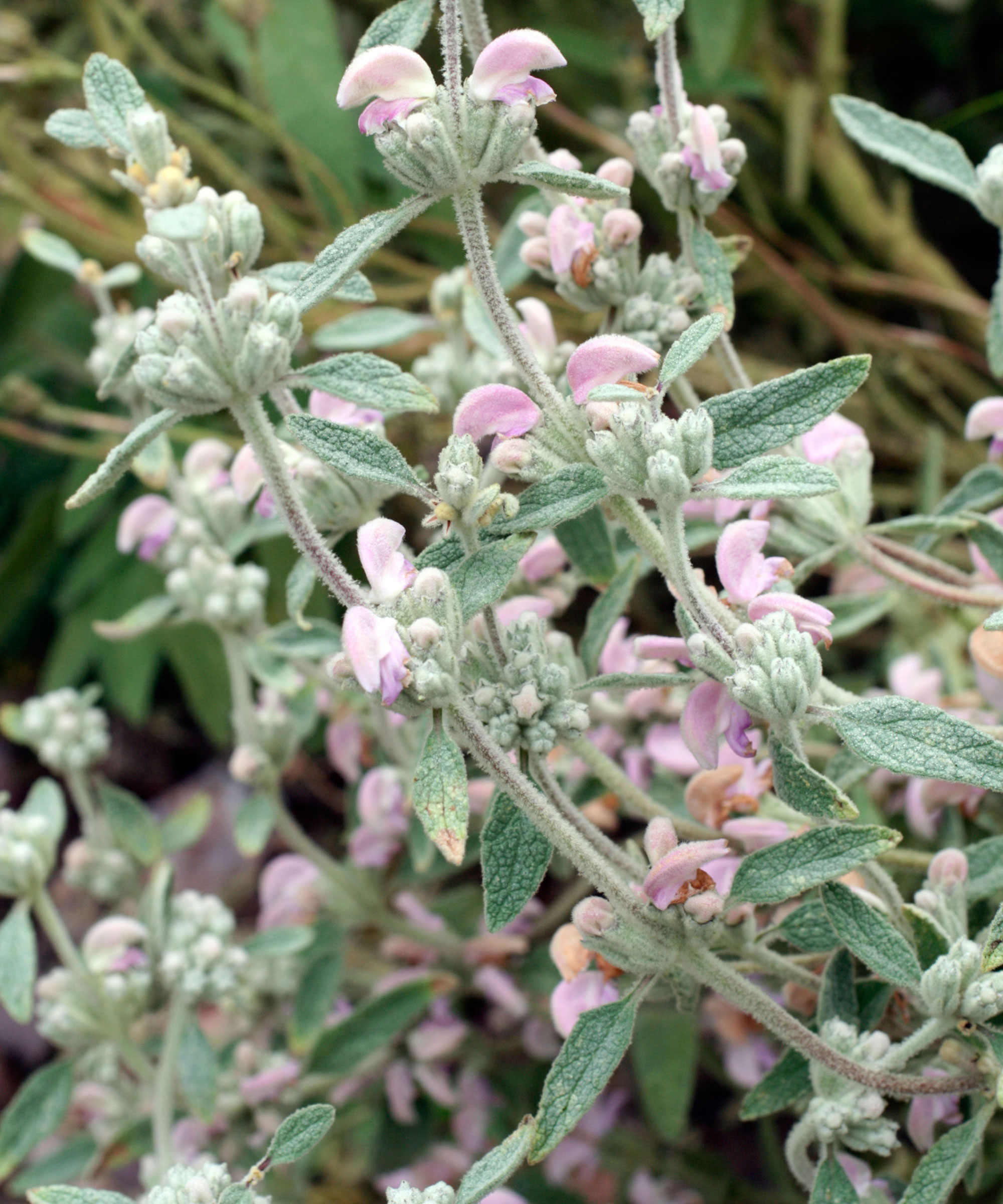
- Hardiness: USDA 7-10 (UK H4)
- Height: 3ft (90cm)
- Spread: 3ft (90cm)
Recommended by Beth Smith, the Balearic Island sage is a stunning shrub with upright stems carrying soft lavender-pink flower clusters that contrast beautifully with the downy silver evergreen foliage during the height of summer.
A delightful plant for a gravel border, it will be very happy in well-drained soil in sheltered full sun. Plant it with Eryngium x zabelii ‘Big Blue’ AGM.
16. Phlomis samia
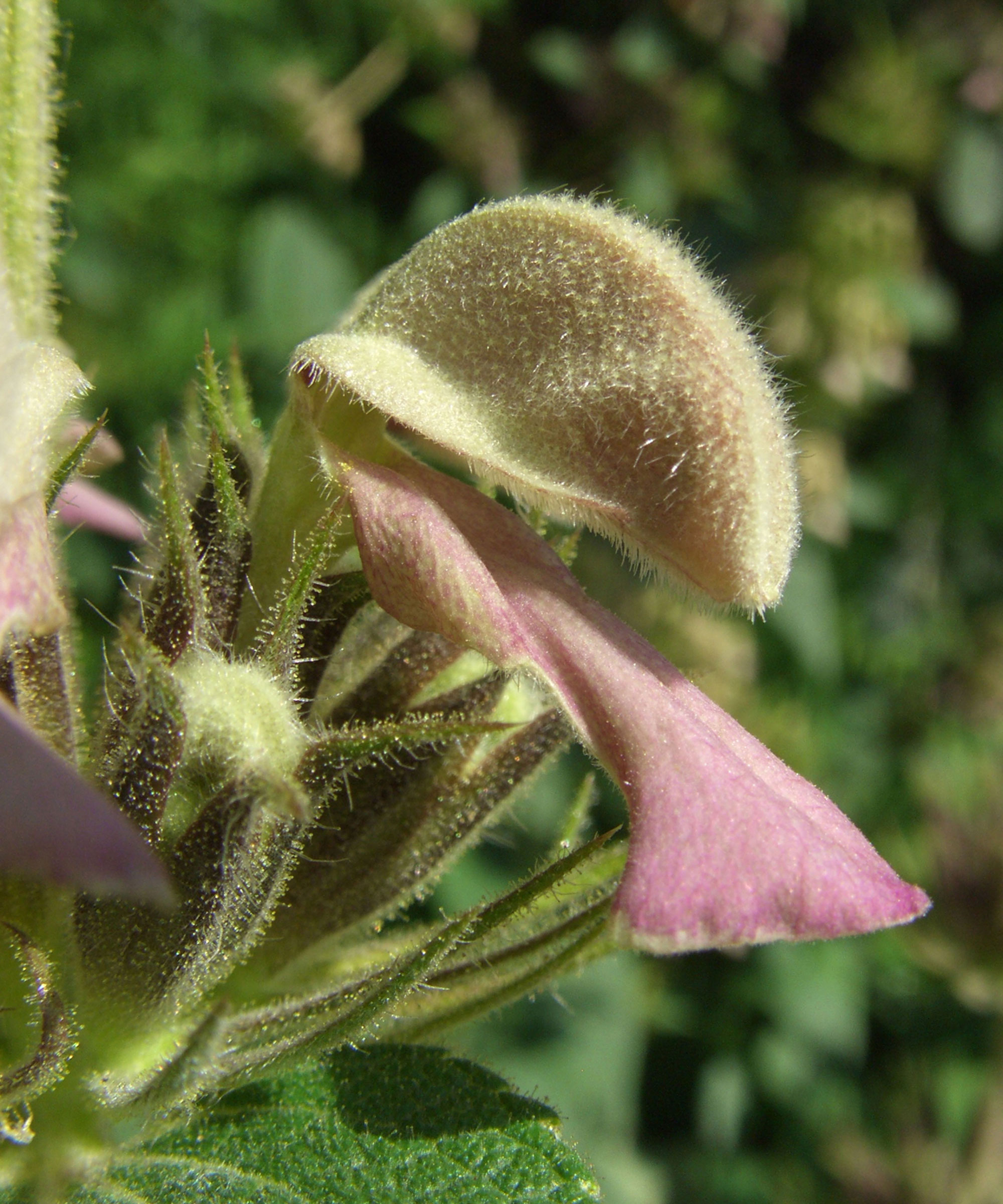
- Hardiness: USDA 7-10 (UK H4)
- Height: 3ft (90cm)
- Spread: 4ft (1.2m)
From the wilds of Greece, Turkey, and North Africa, this interesting form has buff-pink and purple flowers in early summer.
Only purchase from a reputable supplier to ensure the color is good. It is a spreading perennial with large, textured heart-shaped semi-evergreen leaves.
It requires very well-drained soil in full sun, and a good planting partner is Allium cristophii AGM.
What's the best variety of phlomis to grow?
Beth Smith advises that phlomis varieties will thrive in warm, sunny conditions. For the average garden, she recommends planting pink-flowered Phlomis italica, golden Phlomis x termessi, white Phlomis. anisodonta, and lime-white Phlomis samia ‘Green Glory’.
'They love the Mediterranean conditions of my garden on the North Devon coast in the UK,' she says. 'It has full sun and very well-drained soil. Phlomis will grow on almost any soil as long as it is well-drained, so use plenty of grit when planting. Phlomis typically need full sun in a UK climate, although in the Mediterranean and beyond, they tolerate partial sun.
'Another good reason to grow phlomis varieties is that they are wonderful foliage plants,' she adds, 'being mostly grey-leaved, they make attractive foils to other plantings.'
What are the best phlomis varieties for growing in pots?
It's possible to grow phlomis as part of your container gardening ideas, as long as the garden planter you are using is very well-drained.
It's best to avoid the more vigorous forms if you want to contain the growth in a pot. For that reason, the compact yellow-flowered P. lanata is ideal. Cover the compost with a layer of gravel and sit the pot in full sun.

What will grow well alongside phlomis?
Perennials and shrubs that love well-drained soil in sun as your best bet – such as sea holly, salvias, globe thistle, verbascum, stipa, stachys, achillea, cistus, lavender, nepeta, and hylotelephium.


Ruth is the gardening editor of Amateur Gardening magazine and spends her working days carrying out, writing about and photographing the tasks the readers should be carrying out each week, as well as testing many of the new products that arrive on the gardening market. She is horticulturally trained, with a qualification from the Royal Horticultural Society.
